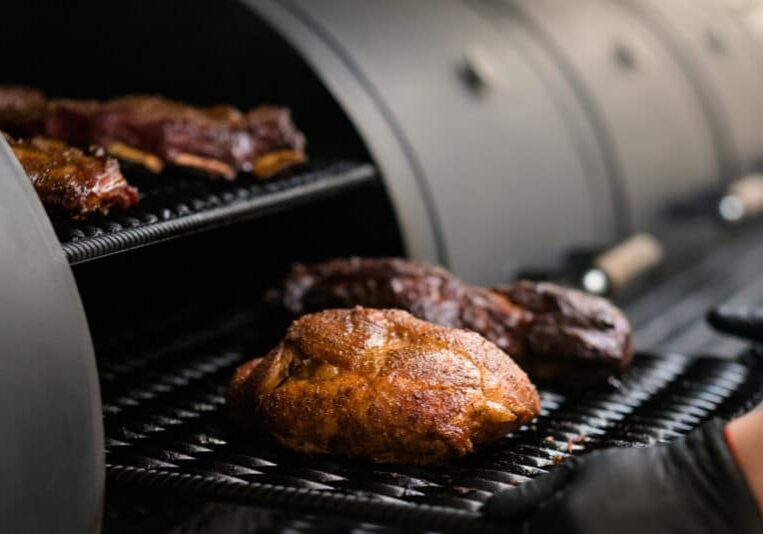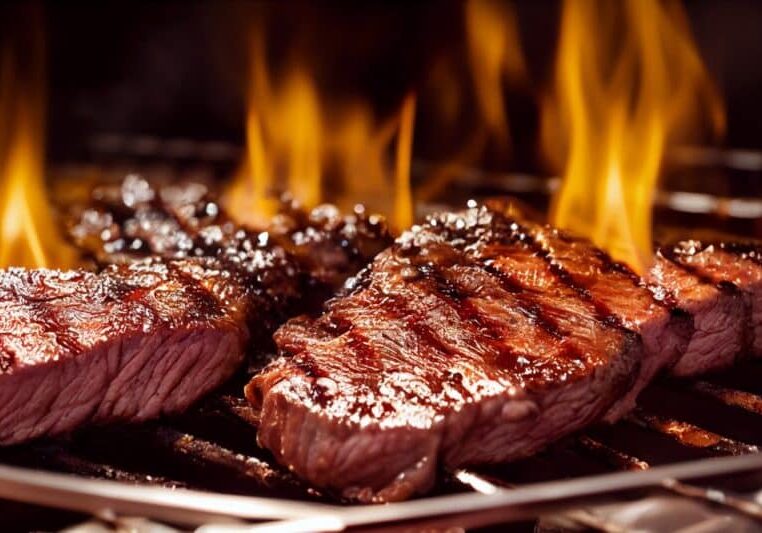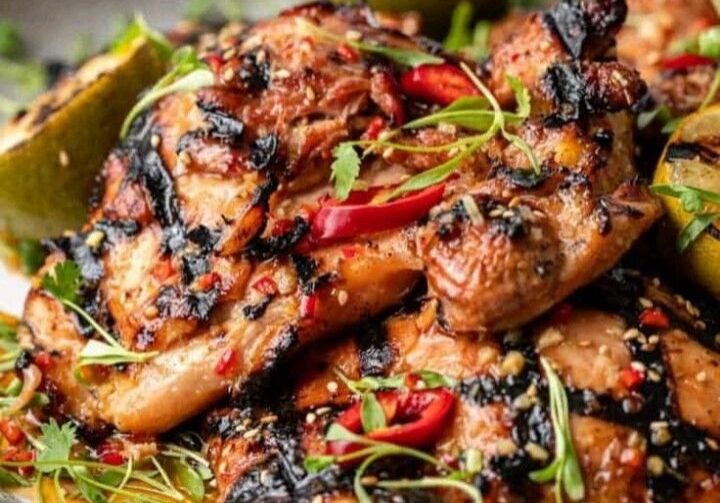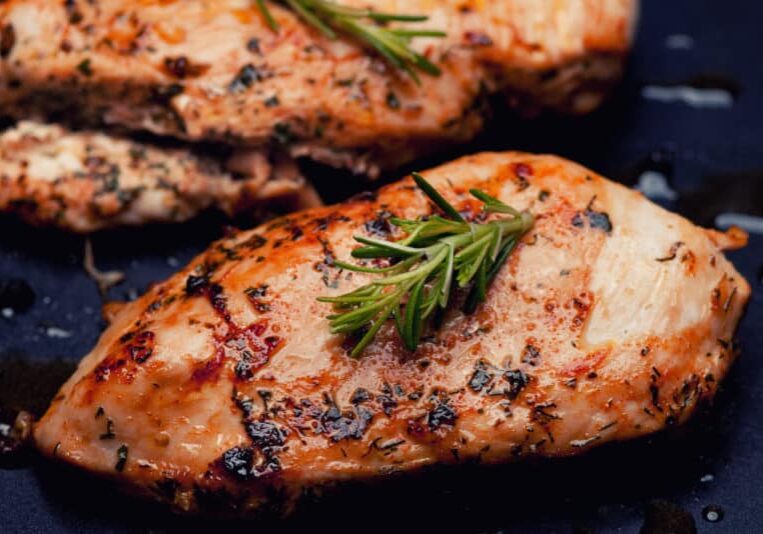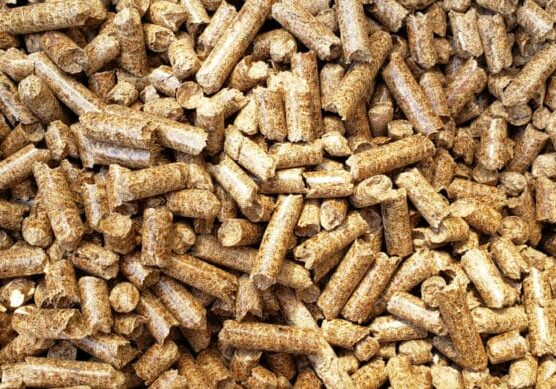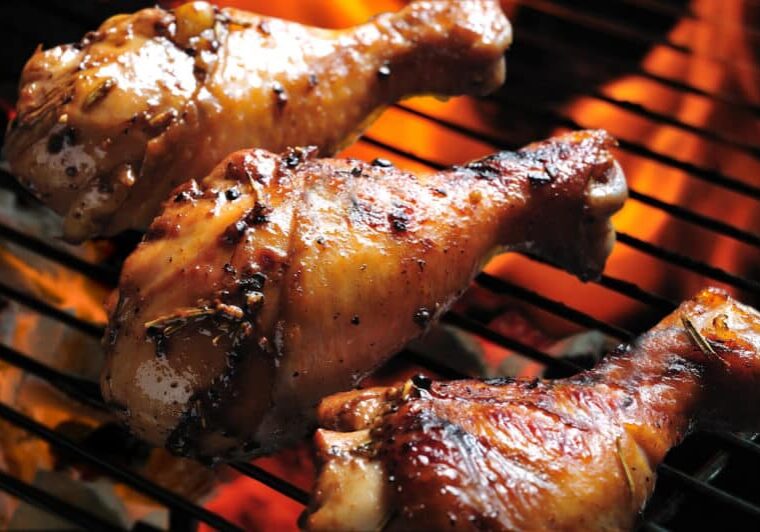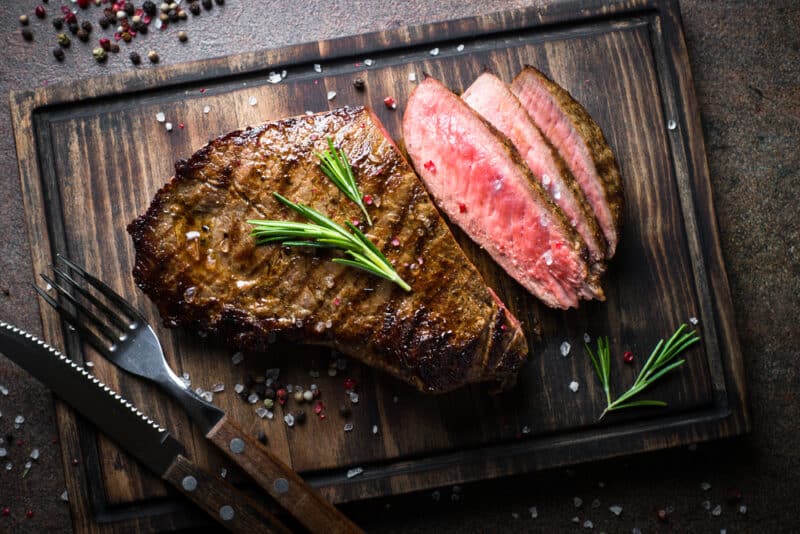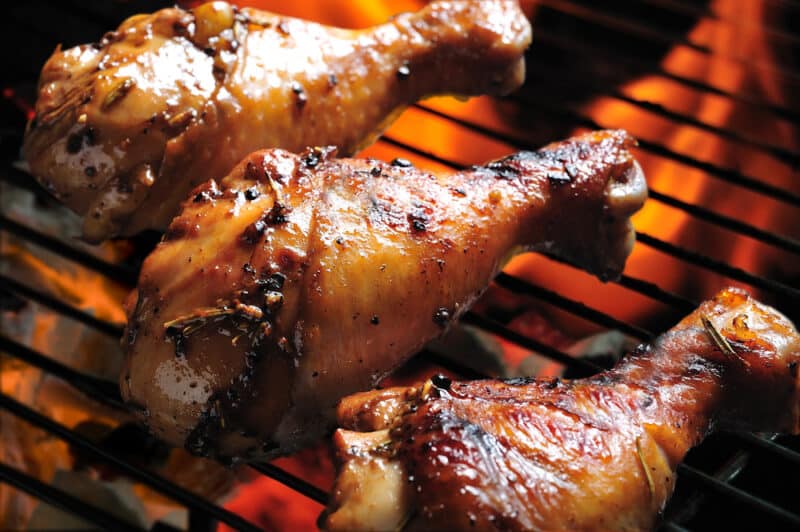How to Control Temperature on a Charcoal Grill: Expert Tips
TheGrillingMaster.com is reader-supported. If you buy something using the links on our site, we might earn an affiliate commission at no added cost to you. This helps us pay our staff to keep making awesome content for you!
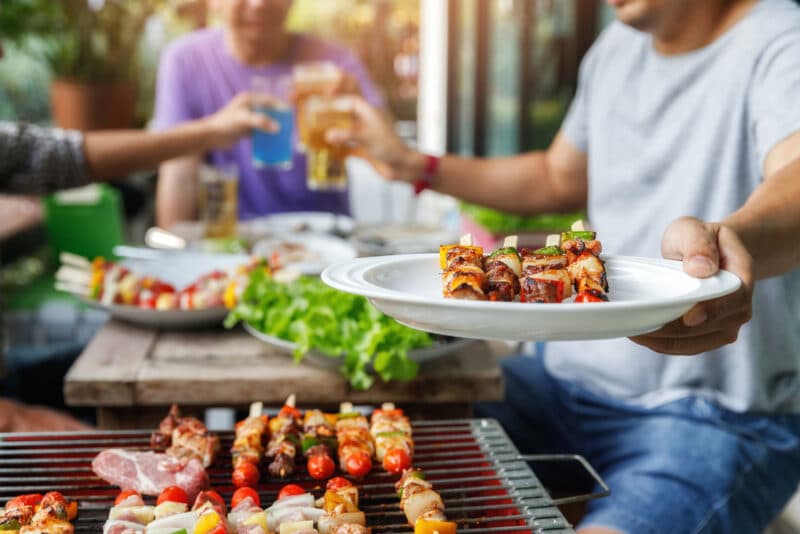
Ever find yourself in a showdown with your charcoal grill, trying to dodge a culinary catastrophe with either an over-charred meal or one that’s woefully undercooked? Trust me, you’re not alone.
It’s like the grill has a mind of its own sometimes. But here’s some good news: there really is hope for all of us aspiring pitmasters. With thoughtful temperature control tricks up our sleeves – think strategic vent adjustments and savvy creation of cooking zones – we can conquer that fiery beast.
This post promises to be your roadmap to grilling prowess, so let’s buckle in and get ready to turn those sizzling battles into victories!
Key Takeaways
- Adjusting the vents on your charcoal grill increases or decreases temperature by controlling airflow; open them to raise the heat, close them to lower it.
- Create different cooking zones by arranging coals in specific areas of the grill for direct and indirect heating options, allowing you to cook various foods perfectly at once.
- Use a food guard made of aluminum foil or metal barriers to shield sensitive items like vegetables from direct heat and prevent burning.
- Keep an eye on your fuel levels – add more charcoal when necessary to maintain consistent high temperatures or reduce coals if the grill gets too hot.
- Monitor and adjust the distance between food and coals through grate height control for even cooking without charring.
Four Techniques for Controlling Heat on a Charcoal Grill
When it comes to controlling heat on a charcoal grill, there are four key techniques that can help you achieve the perfect temperature for your grilling needs. From building a food guard to creating cooking zones and using grates, these methods will give you more control over the heat distribution on your grill.
Build a food guard
I often safeguard my food from intense heat by building a food guard on my charcoal grill. This simple trick involves using aluminum foil or a small metal barrier to create a shield between the food and the coals.
By inserting this guard around the edges of the grill where I place items like vegetables or delicate fish, they cook evenly without charring too quickly.
My food guard isn’t just good for preventing burns; it also helps with temperature management across the grilling surface. With this in place, flare-ups are less likely to scorch your meal, giving you that perfect balance of smoky flavor and well-cooked texture every time you barbecue.
Create cooking zones
To create cooking zones on a charcoal grill, I typically pile the coals on one side of the grill, leaving the other side empty. This setup allows for two distinct temperature zones – one hot and one cooler.
By using this method, I can sear meats over direct heat while simultaneously having a cooler area to move them to once they’ve achieved a nice char. This technique works great for accommodating different types of foods that require varying levels of heat, giving me more control over the grilling process.
When creating cooking zones, it’s essential to consider where each type of food will receive optimal heat exposure. This approach ensures that everything cooks evenly and thoroughly without some items being undercooked or overdone due to inconsistent temperatures.
Use grates
After creating cooking zones, the next step is to use grates effectively. Placing the grates closer to the coals will increase the heat, while raising them will lower it. Fine-tuning your grill’s temperature by adjusting the distance between the food and the coals using grates is crucial for achieving perfectly grilled dishes.
To maintain precise control over your charcoal grill’s temperature, regularly monitor and adjust the position of your grilling grate as needed. By utilizing this simple technique, you can ensure that your food cooks evenly and achieves that sought-after smoky flavor.
Adjust vents
To adjust vents, simply twist the top and bottom handles. Opening them increases airflow, making the fire hotter. Closing them restricts airflow, lowering the temperature inside the grill.
It’s crucial to monitor and adjust these vents carefully throughout the grilling process to maintain a consistent temperature for perfectly cooked food.
Now let’s delve into why controlling temperature is important for different types of grilling methods on a charcoal grill.
Why Controlling Temperature is Important for Different Types of Grilling
Controlling temperature is crucial for low and slow cooking to achieve tender and flavorful meat, as well as for creating indirect heat zones for delicate foods like fish or vegetables.
Understanding the importance of temperature control can elevate your grilling skills to the next level. Learn more about these techniques by reading the full blog!
Low and slow cooking
Low and slow cooking is all about patience and precision. When using this method, I carefully control the grill’s temperature to ensure that my food cooks slowly over a longer period of time.
This technique is perfect for tough cuts of meat or delicate items that need gentle heat to preserve their flavors and textures. By maintaining a low and consistent temperature, I can achieve tender, juicy results that are packed with smoky goodness.
To master low and slow cooking, it’s crucial to understand how to regulate your charcoal grill’s airflow, monitor fuel levels, and create indirect heat zones. These elements work together to maintain a steady temperature throughout the cooking process.
With attention to detail and these essential techniques in place, you’ll be well on your way to becoming an expert in controlling the temperature for low and slow grilling.
Indirect vs direct heat
When grilling, understanding the difference between indirect and direct heat is crucial. Direct heat is when the food is placed directly over the heat source, ideal for searing steaks or cooking thin cuts of meat.
Indirect heat involves placing the food away from the coals, allowing for slower and more even cooking, perfect for larger cuts of meat or delicate foods.
Controlling your grill’s temperature using indirect versus direct heat can significantly impact your final dish. By mastering this technique, you’ll elevate your grilling game and expand your culinary repertoire.
How to Raise the Temperature on a Charcoal Grill
To raise the temperature on a charcoal grill, increase airflow by adjusting the vents, create a hotter fire by adding more coals, and monitor fuel levels for consistent heat. For more expert tips on controlling temperature on a charcoal grill, keep reading!
Increase airflow
To increase the temperature on a charcoal grill, open the vents to allow more air to flow into the grill. This will fuel the fire and raise the heat inside. Adjusting the airflow through the use of vents is a simple yet effective way to control and elevate the temperature for faster cooking or searing.
Moreover, opening the vents encourages oxygen circulation, which helps in maintaining a consistent high temperature throughout your grilling process. Balancing how much air enters will directly impact how hot your coals burn, offering you precision in regulating your grilling temperatures without much hassle.
Create a hotter fire
To increase the temperature on a charcoal grill, add more charcoal and arrange it to create a hotter fire. Stack the coals closer together to intensify the heat output. Open the vents wide to allow for increased airflow, which will fuel the fire and elevate the grilling temperature.
For an even hotter fire, consider using a chimney starter to preheat additional charcoal before adding it to the grill. This technique ensures that the new coals are at their maximum heat level when they are introduced into the existing fire.
By doing so, you can reach higher temperatures quickly and maintain them throughout your grilling session.
Monitor fuel
To maintain a consistent temperature on a charcoal grill, regularly monitor the fuel levels. Check the amount of charcoal and wood chips to ensure that there’s enough for your desired cooking duration.
Throughout the grilling process, observe and replenish the fuel as needed to prevent sudden drops in temperature.
Keep an eye on the burning rate of the coals and adjust as necessary to maintain steady heat. By monitoring your fuel throughout grilling, you can ensure a smooth and controlled cooking process while achieving delicious results with ease.
How to Lower the Temperature on a Charcoal Grill
To lower the temperature on a charcoal grill, close the vents to reduce airflow and decrease oxygen supply to the coals. You can also use a three-zone or two-zone fire method to create cooler cooking zones on your grill.
Monitoring the distance between your food and the coals can also help in lowering the temperature for more controlled cooking.
Close vents
To lower the temperature on a charcoal grill, simply close the vents partially to reduce the airflow. This will restrict oxygen flow and help control the heat. By adjusting the vents, you can effectively regulate the temperature for different cooking methods such as low and slow cooking or when needing to create indirect heat zones.
Monitoring the distance between your food and coals is also crucial in maintaining a consistent temperature.
Adjusting grill vents is key in managing heat regulation on a charcoal grill. Closing the vents helps decrease oxygen intake, which in turn lowers the cooking temperature. It’s an essential technique for achieving precise control over your grilling environment while creating delicious meals with perfect doneness.
Use a three-zone or two-zone fire
To lower the temperature on a charcoal grill, one can utilize a three-zone or two-zone fire. This method involves creating different heat zones within the grill to have more control over the cooking process.
By arranging the coals in specific configurations, such as a hot zone for searing, a medium zone for general grilling, and a cool zone for indirect cooking, it becomes easier to adjust the heat according to individual food requirements.
The three-zone fire is ideal for preparing various types of dishes simultaneously at different temperatures without needing multiple grills.
Monitor distance between food and coals
After establishing a three-zone or two-zone fire, it’s crucial to monitor the distance between the food and coals. This ensures that your food cooks evenly without burning. Adjusting the height of the grill grate can help regulate the heat reaching your food.
Keep in mind that different types of food may require varying distances from the coals, so it’s essential to keep a close eye on this throughout the grilling process for perfect results.
When arranging your grill for indirect cooking, ensure there is sufficient space between the coals and where you place your food. This will prevent excessive heat from scorching delicate items like vegetables or fish while still allowing them to cook through gently.
Troubleshooting: Common Issues with Controlling Temperature on a Charcoal Grill
If you find that your grill is too hot, it may be due to an excessive amount of airflow or a fire that’s burning too aggressively. On the other hand, if your temperature is too low, it could be a result of insufficient airflow or insufficient fuel.
Understanding the common issues with controlling temperature on a charcoal grill can help you troubleshoot and maintain the perfect grilling conditions.
Too hot
When the grill is too hot, it’s essential to act quickly. First, open the lid carefully and adjust the vents to reduce airflow. This will help lower the temperature. Next, move the food to a cooler part of the grill or place a temporary food guard between the coals and your dish.
It’s important not to let the situation stress you out; instead, stay calm and take action promptly.
If temperatures remain high even after these adjustments, consider removing some of the burning coals from under your food or extinguishing them altogether. Keep an eye on your charcoal levels so that you can maintain optimal heat for grilling.
Best temperature for grilling
To achieve the best temperature for grilling, it’s essential to understand the optimal heat level for different types of food. For most meats and vegetables, a medium-high heat ranging between 375-450°F is ideal.
This temperature ensures that the food cooks through while achieving a delicious sear on the outside. However, if you’re grilling thicker cuts of meat or delicate items like fish, a lower heat around 225-275°F allows for slow and gentle cooking, preserving moisture and tenderness.
Monitoring the grill temperature with an accurate thermometer is crucial to ensure consistent results every time.
Use of grill lid
To maintain the ideal grilling temperature, don’t underestimate the power of your grill lid. It serves as a crucial tool to lock in heat, speed up cooking time, and infuse smoky flavor into your food.
By keeping the lid closed during cooking, you create a convection effect that circulates hot air around the food, ensuring even cooking and preventing temperature fluctuations. This technique is particularly effective for low-and-slow barbecuing or when using indirect heat methods.
When employing direct heat for quick searing or grilling thin cuts of meat, leaving the lid off can help prevent food from becoming overcooked due to excessive trapped heat. However, remember that constantly opening and closing the lid can lead to unpredictable temperature changes and may lengthen the overall cooking time.
Conclusion
In conclusion, mastering temperature control on a charcoal grill is essential for achieving perfect grilling results. Adjusting vents and creating cooking zones are effective techniques to manage heat levels.
Monitoring fuel and airflow while troubleshooting common issues will help you become an expert at controlling the temperature on your charcoal grill.
FAQs
1. How do I control the temperature on a charcoal grill?
You can control the temperature on a charcoal grill by adjusting the airflow through vent settings, which affects how hot or cool your grill gets.
2. What’s the best way to adjust airflow for grilling?
The best way to adjust airflow in a charcoal grill is by opening or closing the vents. Open vents let more air in, stoking the fire and increasing heat; closed vents reduce airflow and lower temperatures.
3. Can maintaining a stable temperature affect my grilling results?
Yes, maintaining a consistent temperature on your grill ensures that food cooks evenly and turns out just as you want it—perfectly grilled every time!
4. Are there any tips for managing flare-ups when cooking with charcoal?
To manage flare-ups on your charcoal grill, spread out coals evenly and use BBQ tips like keeping part of your grille coal-free as a ‘cool zone’ to move food if flames grow too large.
5. Do different foods require specific barbecue temperature settings?
Different foods absolutely require various barbecue temperatures—meats might need high heat to sear outside while veggies often cook better over medium heat using indirect grilling methods.
Learn More About Grilling
If you want to learn more about grilling, check out these other helpful resources!

Kevin Turner
Hi there, I'm Kevin Turner, Founder and CEO of thegrillingmaster.com. I started this website to share my passion and knowledge with you. You can leverage my years of experience as a pit master and professional to grill great food!
About The Grilling Master
Hi there, I'm Kevin Turner, Founder and CEO of thegrillingmaster.com.
My passion has always been grilling, smoking and BBQ delicious meats that satisfy my inner carnivore!
I started this website to share my passion and knowledge with you, the hungry reader who wants to prepare the perfect meal.
You can leverage my years of experience as a pit master and professional.
Send me a message and let's connect on Twitter here.


